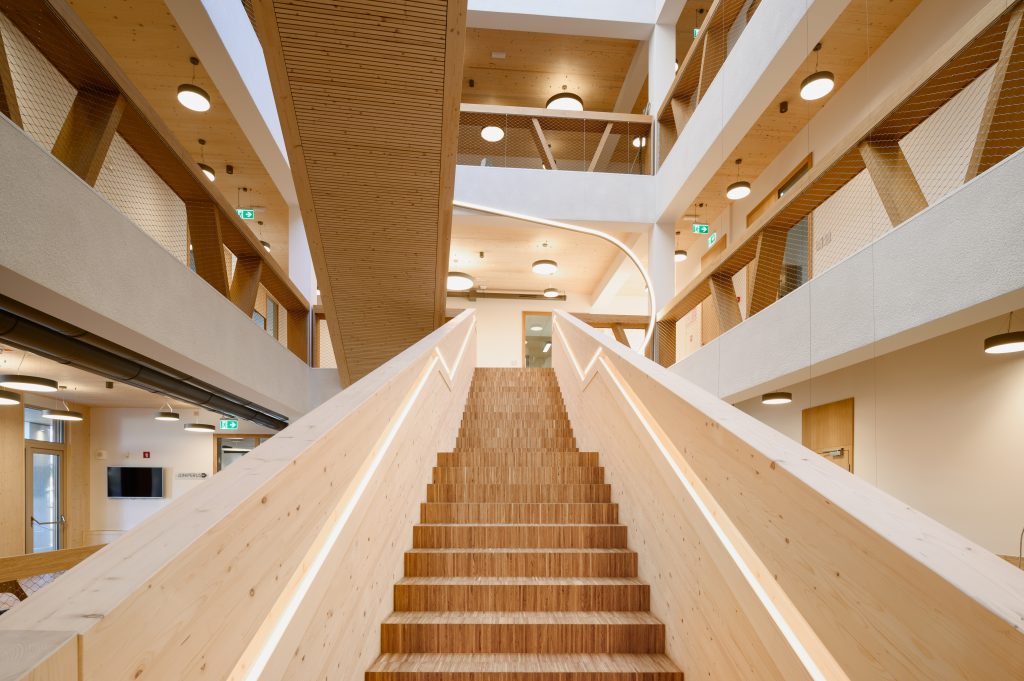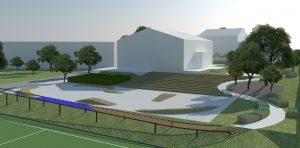
January 7, 2026

Exploring the applicability of wood has led us to new discoveries about its positive impact on children’s emotional, behavioral and intellectual development. On the basis of these discoveries, studies from abroad and experience in the field of social pedagogy, we have developed a thematic path model consisting of wooden playground equipment, which we envisaged for placement in the courtyard of the Livade Izola Primary School (Slovenia). In this way, we have prepared not only a proposal for the Livade School but also the basis for design of other Slovene schoolyards and outdoor classrooms. This is an important topic that is, unfortunately, completely overlooked by Slovenian legislation and general practice in the construction of the country’s school facilities. There are no legal provisions or recommendations for the profession regarding the design of schoolyards. For the most part, schoolyards lack the right facilities to motivate children to spend an active, creative and explorative time outdoors.
The thematic path project for the schoolyard was carried out within the framework of a mutual cooperation agreement between the Municipality of Izola and InnoRenew CoE, which was the basis for membership of the Municipality of Izola in Living Lab InnoRenew.
InnoRenew CoE’s experts from various fields – architecture, construction, mechanical engineering, woodworking, materials technology and social pedagogy – were involved in the preparation of the project solution. This interdisciplinary collaboration led to an innovative solution for a new thematic path in the schoolyard, allowing children’s social, emotional, cognitive and physical development through play. We suggest that moving outdoors and exploring different content increases pupil’s motivation, enthusiasm and confidence; reduces attention problems; improves motor skills and learning achievement; enables social development; increases environmental concern and responsibility and facilitates cross-curricular integration.
In the process of designing one set of playground equipment, we also included pupils of the sixth grade at Livade School who, during a one-day workshop, designed ideas and presented them in the form of models at a school exhibition. At the workshop, it turned out that children wanted to spend more active time outdoors. Most missed was playground equipment that would motivate them to exercise and challenge their own limits of courage and physical power. Pupils at the workshop designed various wooden structures that would offer surfaces for climbing, descending and zip lines. At the same time, they also showed a desire for hidden corners that would be located in wooden houses and allow retreat and connection between the imaginary and real world.
The proposed thematic path connects all previously separated areas of the schoolyard and consists mainly of wooden parts (paving, benches, playgrounds, climbing tools, vegetable garden, pergola, outdoor classrooms). Pupils will be able to use it completely, as a single polygon, or only partially, as a content and design complement to each section of the schoolyard. In addition, we designed the thematic path as a research project to monitor various wooden and other building materials, observe the use of certain elements, and mentor research tasks that students will perform in different areas of sustainable environmental and spatial development.

View of the playground with net for climbing, cycle- and skateboard-polygon, maze and vegetable beds. Photo: InnoRenew CoE
We introduced the project not only to the leadership of the school and the Municipality of Izola but also to the school’s teachers and parents’ council. It was welcomed by all, with some people emphasizing the importance of ensuring safety in the element’s use and long-term durability when designing the playground equipment and outdoor classrooms. Concern was expressed about the use of wood in the external environment of the Slovenian coast as wood in this area is subject to faster aging than elsewhere in Slovenia. Longer timber durability was envisaged in the project by using new methods of wood protection, from the use of modified wood to new environmentally friendly protective coatings.
The thematic path is a catalogue of different playground equipment and spatial solutions that have a positive impact on children’s versatile development and could be placed in other locations and schoolyards. In this way, the project is an exemplary case of the arrangement of outdoor school spaces that need complete renovation. We hope that with this path, which we are striving for realization, we can also encourage legislators and the competent ministry to actively start renovation of dilapidated schoolyards. In addition, we hope that new rules will be introduced for new school buildings, incorporating the concept of teaching in the external environment and playground design for the development of children’s pedagogy.
Eva Prelovšek Niemelä,
architect and researcher at InnoRenew CoE
Authors of architecture: Eva Prelovšek Niemelä, Aarne Niemelä; experts: Vesna Starman, David B. DeVallance, Igor Gavrič, Rudi Grahek, Andreja Kutnar
Vesna Starman,
assistant researcher at InnoRenew CoE